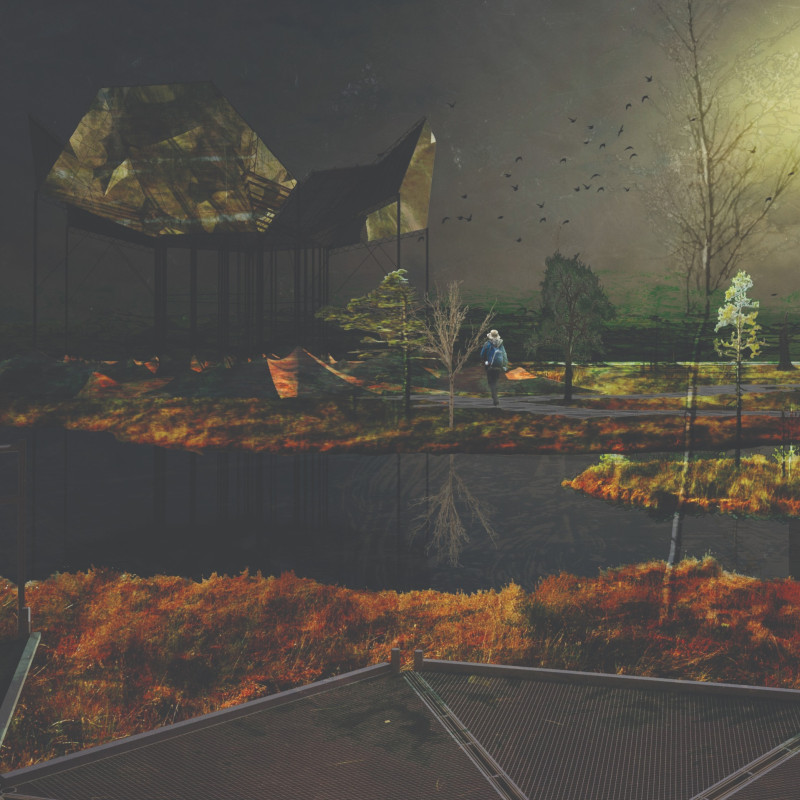5 key facts about this project
Periscopic Dell presents a thoughtfully designed observatory located in Kemeri National Park, Latvia. This architectural project serves as a public observatory, allowing visitors to engage with the surrounding landscape from elevated vantage points. The structure integrates advanced design approaches with an emphasis on environmental sensitivity and accessibility.
The architectural design utilizes a series of warped pyramid forms constructed from materials that blend seamlessly with the natural environment. Core to its function, the observatory creates spaces for visitors to grasp the beauty of the park, encouraging both observation and interaction. The structure is elevated, featuring suspended elements that invite exploration of nature while maintaining a minimal footprint on the land.
Unique Structural Approach
One of the distinct features of the Periscopic Dell is its innovative use of mirrored glass in combination with slender steel columns. This design not only supports the structure but also enhances the visibility of the natural surroundings through reflection, articulating a visual connection between structure and landscape. The use of these materials contributes to a modern aesthetic while ensuring that the observatory remains unobtrusive.
Additionally, the design incorporates gentle pathways that invite visitors to navigate through the landscape rather than adhering to conventional rigid routes. This form of access promotes a more natural interaction with the park's ecosystem while accommodating diverse mobility levels among visitors.
Interactive and Adaptive Spaces
The layout of the observatory includes various interactive spaces designed to accommodate a range of activities. Users can engage in peaceful observation, scientific inquiry, or simply take a moment to relax within the grassy earthworks that complement the architectural elements. These adaptable spaces foster a deep connection with the ecological context of the observatory, allowing for a versatile visitor experience.
The Periscopic Dell stands as an exemplary model of how architecture can harmonize with the natural environment while enhancing user engagement. For detailed insights into the architectural plans, sections, and designs, interested readers are encouraged to explore the overall presentation of the project.



























